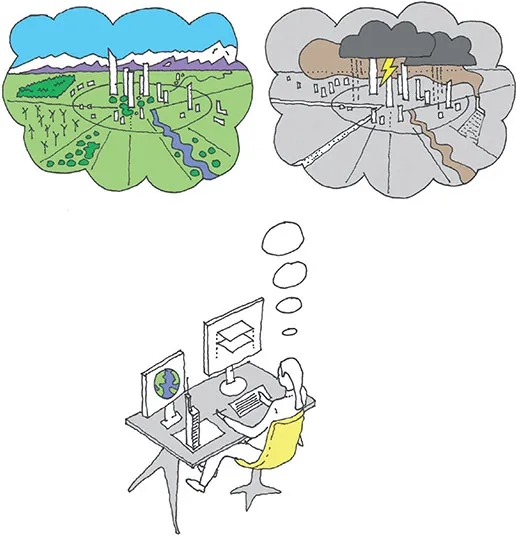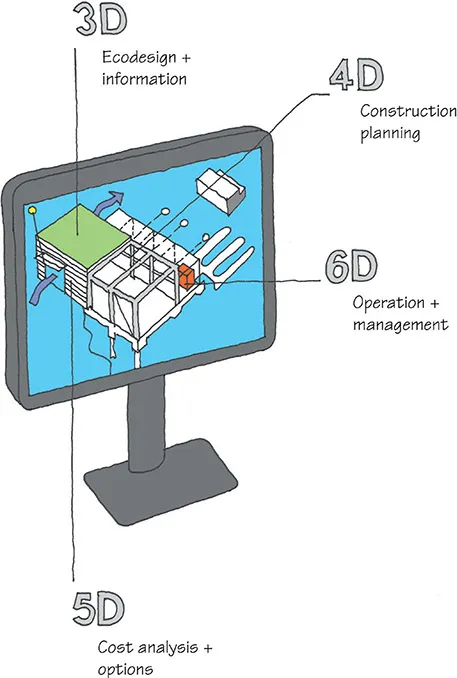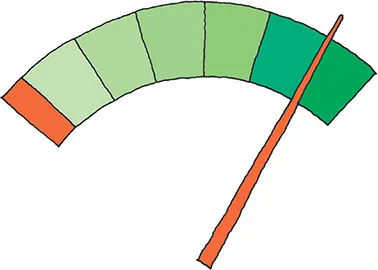
eBook - ePub
101 Rules of Thumb for Sustainable Buildings and Cities
Huw Heywood
This is a test
- 224 Seiten
- English
- ePUB (handyfreundlich)
- Über iOS und Android verfügbar
eBook - ePub
101 Rules of Thumb for Sustainable Buildings and Cities
Huw Heywood
Angaben zum Buch
Buchvorschau
Inhaltsverzeichnis
Quellenangaben
Über dieses Buch
People across the world are becoming more aware of the need for the buildings and cities they live and work in to be sustainable, but the issue of how to be sustainable can seem a confusing and complex one. These rules of thumb provide universal guidelines for the sustainable design of both buildings and the urban realm. It's a global primer and textbook for anyone interested in understanding sustainability in the built environment, an ideal starting point for students as well as an aide memoir for more experienced readers and practitioners interested in this field.
Häufig gestellte Fragen
Wie kann ich mein Abo kündigen?
Gehe einfach zum Kontobereich in den Einstellungen und klicke auf „Abo kündigen“ – ganz einfach. Nachdem du gekündigt hast, bleibt deine Mitgliedschaft für den verbleibenden Abozeitraum, den du bereits bezahlt hast, aktiv. Mehr Informationen hier.
(Wie) Kann ich Bücher herunterladen?
Derzeit stehen all unsere auf Mobilgeräte reagierenden ePub-Bücher zum Download über die App zur Verfügung. Die meisten unserer PDFs stehen ebenfalls zum Download bereit; wir arbeiten daran, auch die übrigen PDFs zum Download anzubieten, bei denen dies aktuell noch nicht möglich ist. Weitere Informationen hier.
Welcher Unterschied besteht bei den Preisen zwischen den Aboplänen?
Mit beiden Aboplänen erhältst du vollen Zugang zur Bibliothek und allen Funktionen von Perlego. Die einzigen Unterschiede bestehen im Preis und dem Abozeitraum: Mit dem Jahresabo sparst du auf 12 Monate gerechnet im Vergleich zum Monatsabo rund 30 %.
Was ist Perlego?
Wir sind ein Online-Abodienst für Lehrbücher, bei dem du für weniger als den Preis eines einzelnen Buches pro Monat Zugang zu einer ganzen Online-Bibliothek erhältst. Mit über 1 Million Büchern zu über 1.000 verschiedenen Themen haben wir bestimmt alles, was du brauchst! Weitere Informationen hier.
Unterstützt Perlego Text-zu-Sprache?
Achte auf das Symbol zum Vorlesen in deinem nächsten Buch, um zu sehen, ob du es dir auch anhören kannst. Bei diesem Tool wird dir Text laut vorgelesen, wobei der Text beim Vorlesen auch grafisch hervorgehoben wird. Du kannst das Vorlesen jederzeit anhalten, beschleunigen und verlangsamen. Weitere Informationen hier.
Ist 101 Rules of Thumb for Sustainable Buildings and Cities als Online-PDF/ePub verfügbar?
Ja, du hast Zugang zu 101 Rules of Thumb for Sustainable Buildings and Cities von Huw Heywood im PDF- und/oder ePub-Format sowie zu anderen beliebten Büchern aus Arquitectura & Arquitectura general. Aus unserem Katalog stehen dir über 1 Million Bücher zur Verfügung.
Information
Chapter 1
The Principles of Sustainability

- The nature of sustainability
- The welfare of future generations
- Creating sustainable environments
- Climate change
1. There’s Only One Planet Earth
There is only one earth, and its ability to support an ever-increasing human population is limited. Based on today’s rate of consumption, we need one and a half earths to provide all our resources and to absorb our waste and CO2. We are treating the planet like an overdrawn bank account. At this rate, by 2050 we would need the support of three earths, which we do not have. There is an ethical duty to design the built environment to operate within the planet’s means, and to a minimum ecological footprint.


Rule 1
2. Sustainability Means Thinking about Tomorrow Today
Our decisions and actions as designers today will have an impact on the planet for future generations. The designer’s goal is the improved long-term quality of both human life and of supporting ecosystems. Make all decisions with future generations in mind.


Rule 2
3. Economy, Equity, Environment: The Three Pillars of Sustainability
These three pillars of sustainability are known as the ‘three Es’. All of society benefits from buildings that are affordable to procure and functional to operate, now and into the future. Society must need and want development for it to be inclusive, it must have cultural and historical relevance and it must be joyful and useful to all. And because good design is enduring, it always seeks to protect and enhance the environment and its ecosystems.


Rule 3
4. Sustainable Design is a Method, Not a Style
Buildings and cities will only be sustainable if we set out intentionally to make them so, and this requires an interdisciplinary understanding of the economic, social, environmental and technical issues to be applied from the outset. Once a building has been designed, it is too late to make it sustainable: bolt-on features and gadgets that contribute little or nothing of environmental value are known as ‘eco-bling’, and they are often merely boastful. Set out to make buildings sustainable, or else they will not be.


Rule 4
5. Sustainable Design is 6-Dimensional
A sustainable building is holistic, conceived with its whole life in mind. The effectiveness of its environmental design qualities, as well as its environmental impacts, can be examined during the design stages. This is possible because traditional 2D drawings have become intelligent 3D virtual models, in which time is the 4th dimension and the lifetime cost of our decisions is the 5th. In a 6D model, the as-built project information would become available to the owner in order to enable sustainable operation of the building. Innovate with the available tools, to create sustainable environments–design in six dimensions.


Rule 5
6. How ‘Green’ is Your Building?
‘Green’ means sustainable, but there are many shades of green. A ‘light-green’ building will target a few of these rules of thumb. A ‘deep-green’ building will successfully adopt most of them. Aim for the deepest green possible. A deep-green building will:
- Have a highly energy-efficient envelope
- Be a net producer of energy and a zero-carbon emitter
- Optimise use of resources and embodied energy
- Minimise water use and waste
- Be healthy and non-polluting
- Be long lasting, adaptable and easy to dismantle


Rule 6
7. What on Earth is the Environment?
The ancient Greeks did not have the word ‘environment’. The word as we use it today is relatively ...